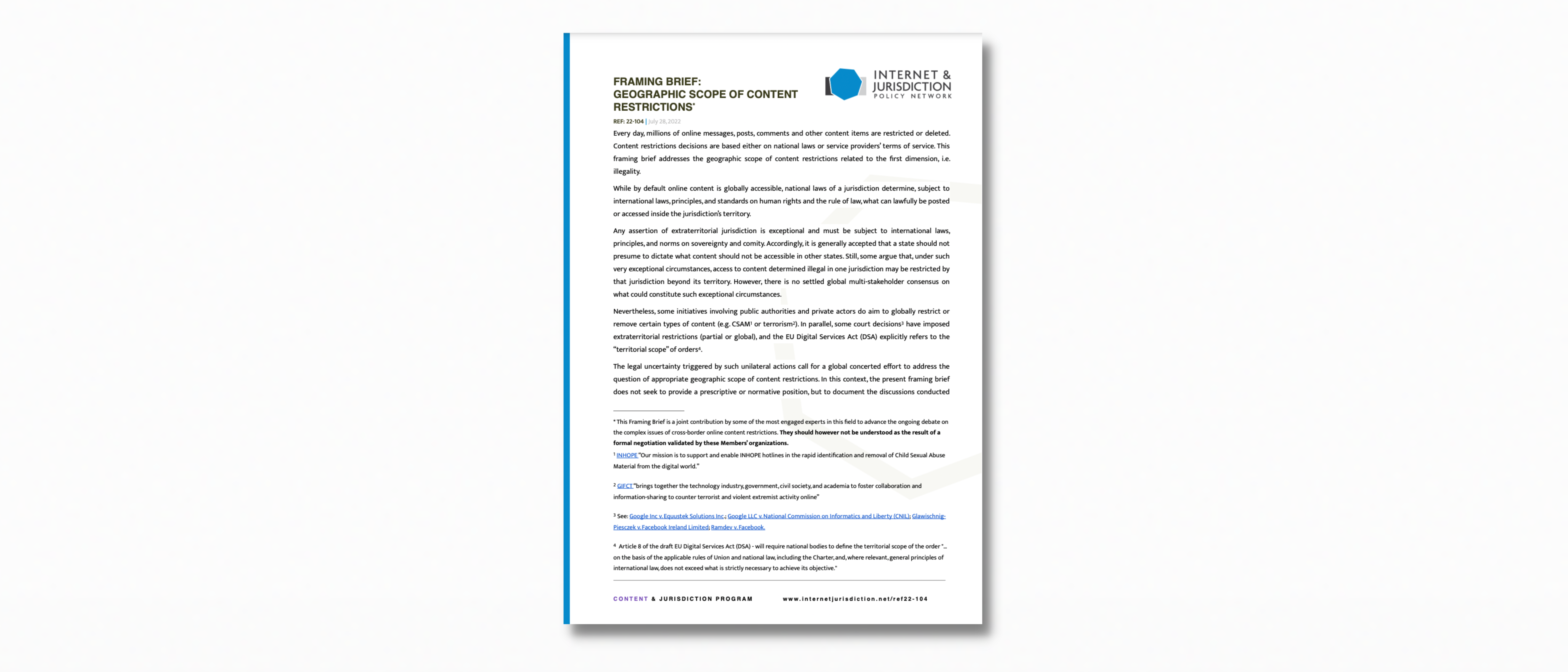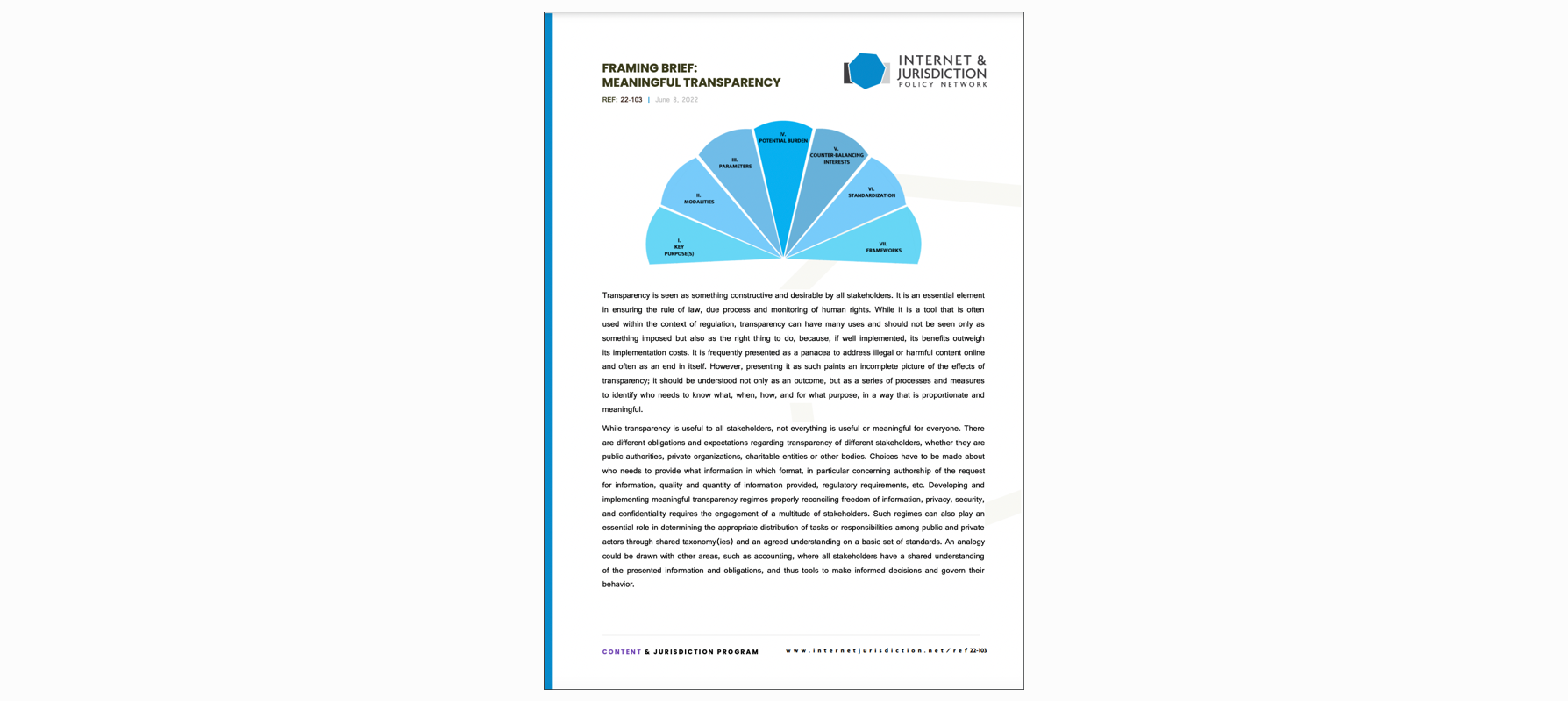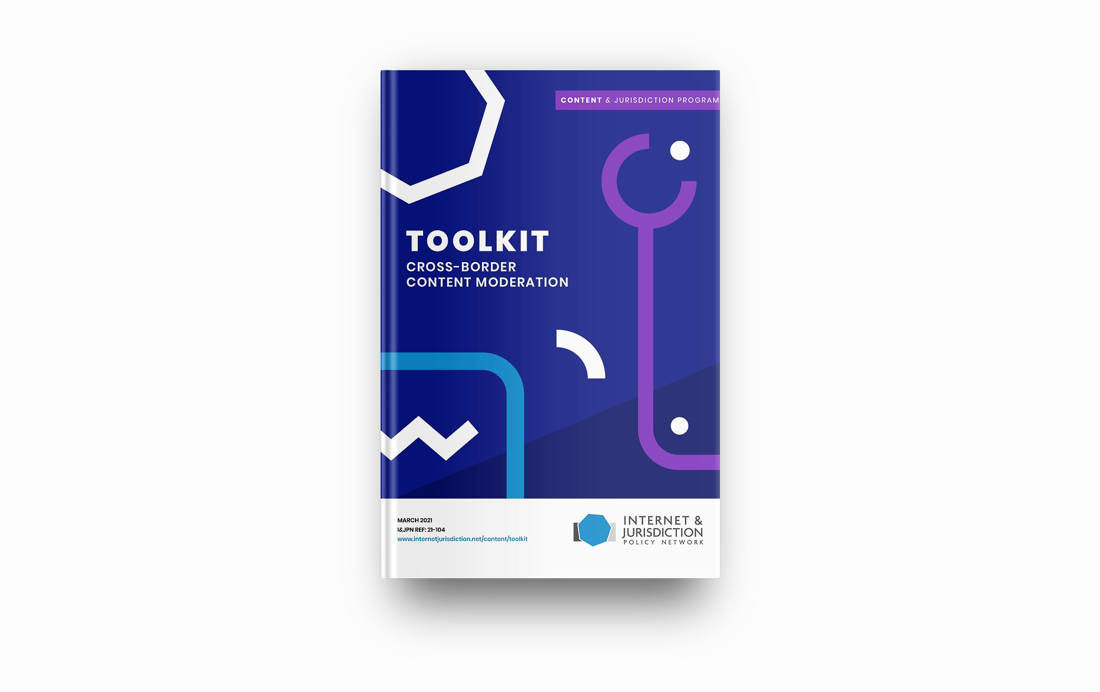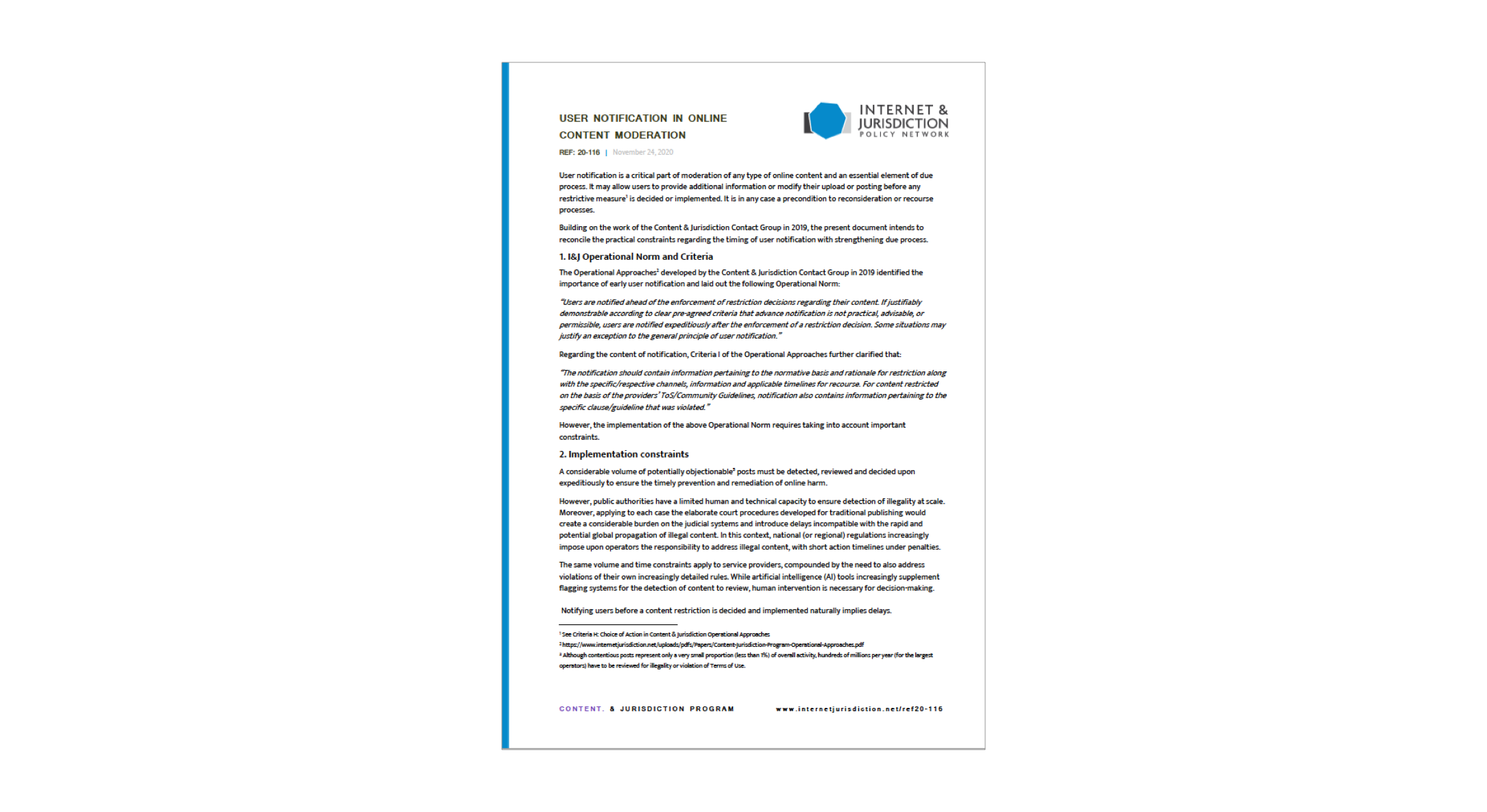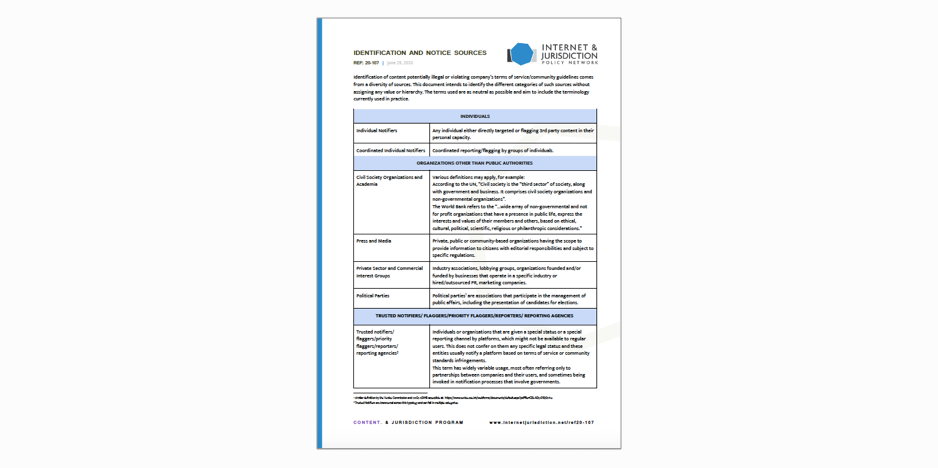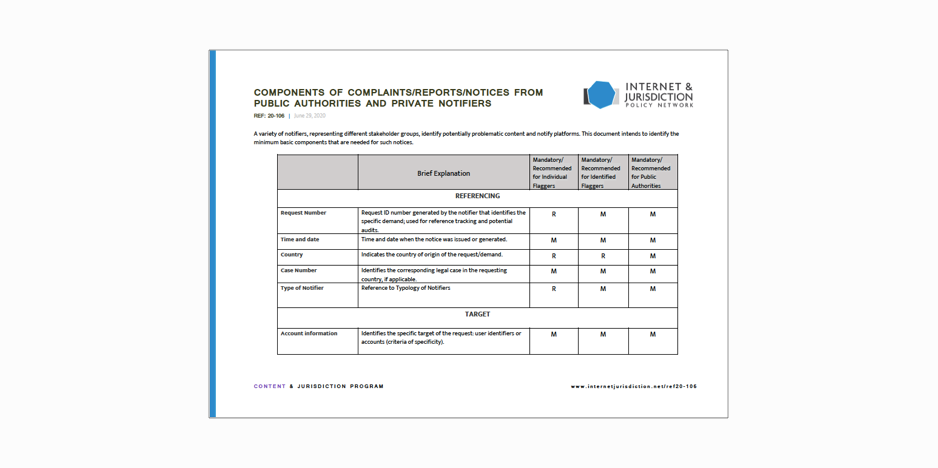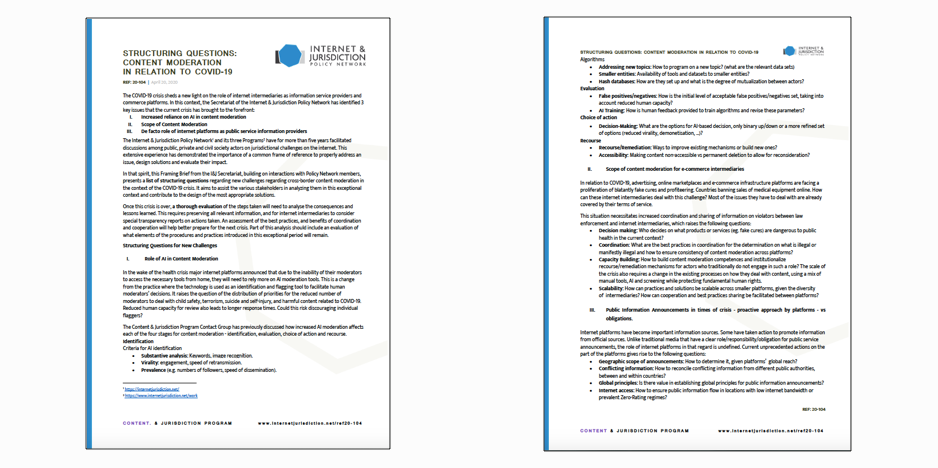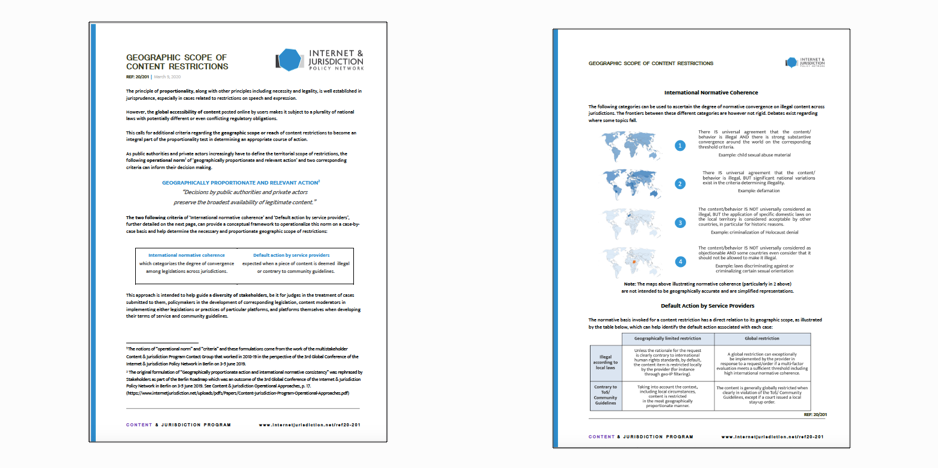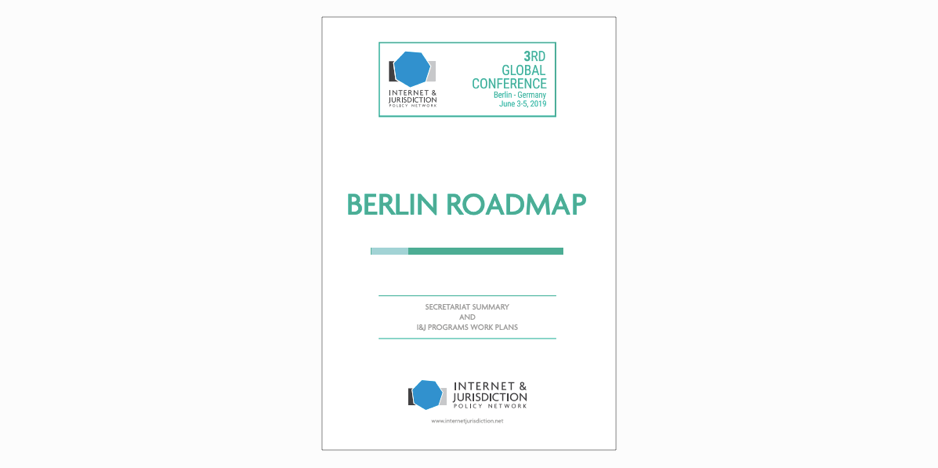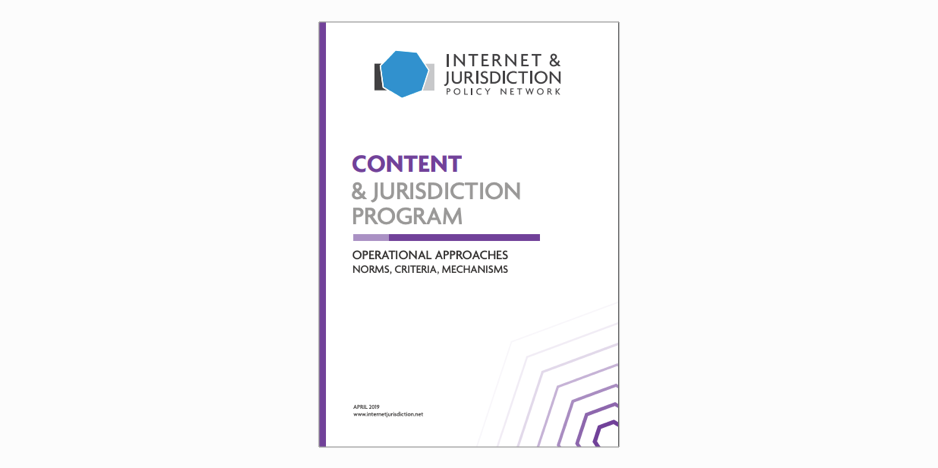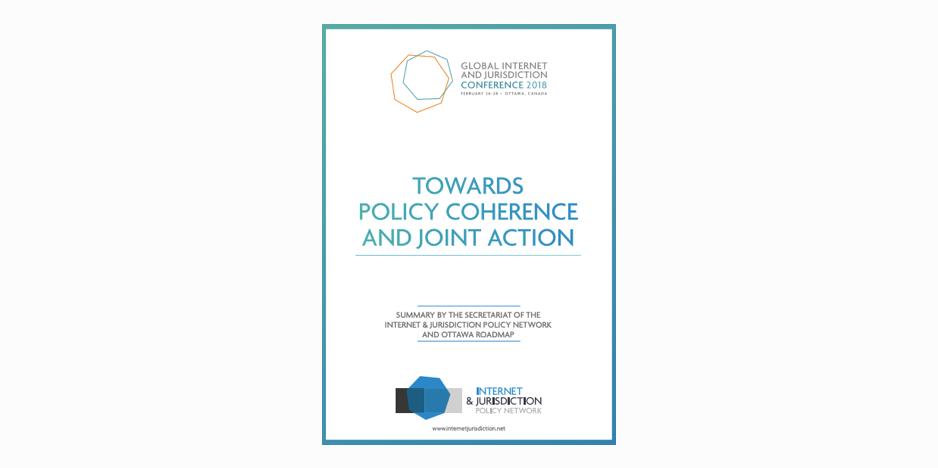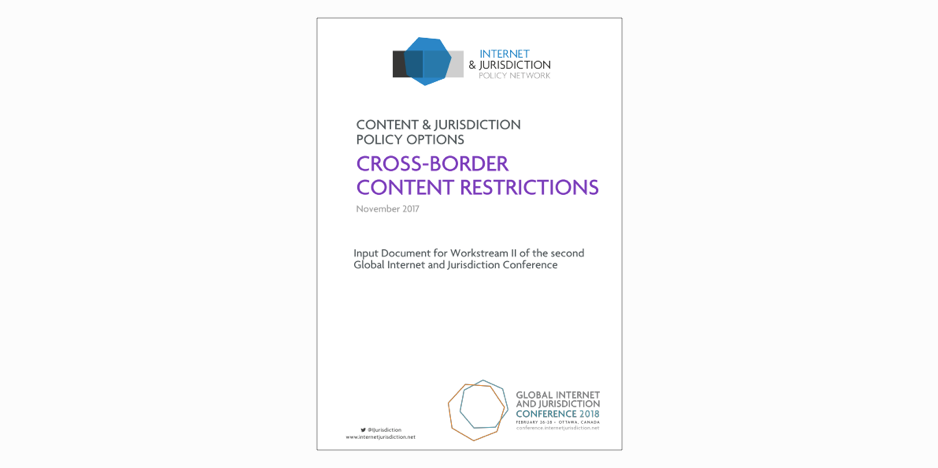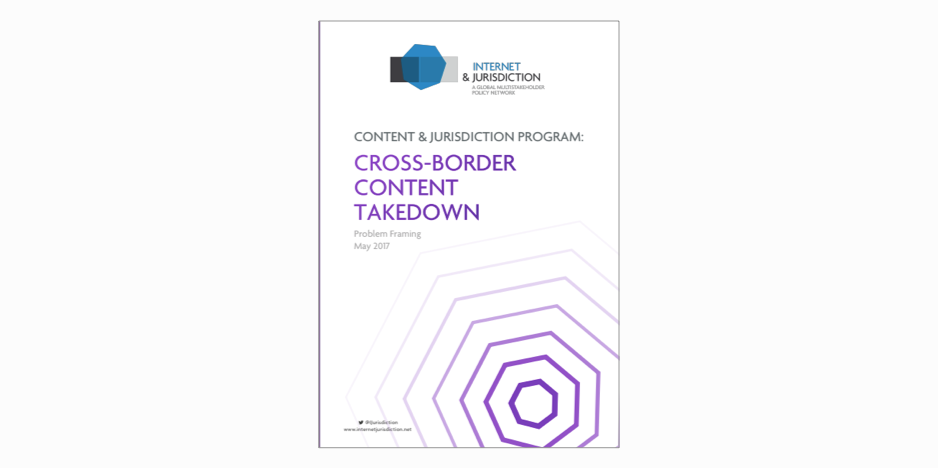From framing problems in common to developing operational approaches, stakeholders in the Content & Jurisdiction Program have worked collectively towards framing policy problems, sharing knowledge, and designing common policy approaches for cross-border content restrictions.
2022
The I&JPN has released a Framing Brief on the geographic scope of content restrictions to document the current consensus across different stakeholders on the topic, and help inform future discussions.
Download here
The I&J Framing Brief offers a shared taxonomy and a set of structuring elements to aid the design, exploration, development, and implementation of meaningful transparency measures by states, companies and regulators.
The resource highlights key issues to be addressed by all involved in planning, establishing, and working on transparency, from a company that seeks to come up with transparency reporting policy, to a regulator when considering transparency measures.
Download here
2021
The I&JPN Toolkit on Cross-Border Content Moderation provides an overview of some of the key issues that arise when managing online content considering diverse local laws and norms. It intends to support Service Providers, in the design of their content moderation activities and Notifiers in the detection and reporting of problematic or abusive content as well as Legislators and Policy-Makers in determining procedures for dealing with different types of content and abusive behavior.
Access the Toolkit here
2020
The Content & Jurisdiction Program is currently working to help develop legal interoperability around cross-border content moderation and restrictions in two dimensions:
- Interoperability between actors: to enable automation of the technical workflow among public authorities and private actors across borders to ensure due process at scale.
- Interoperability between norms: to reduce the potential of conflicts in rule-setting, implementation, and enforcement among different regimes.
The outcome examines the different stages in user notification and presents ways in which user notification can be meaningfully implemented.
Download here
This document intends to identify the different categories of notifiers without assigning any value or hierarchy. The terms used are as neutral as possible and aim to include the terminology currently used in practice.
Download here
This resource contains a list of components that should be included in any notification that is made by either individuals, identified notifiers (including trusted flaggers), or public authorities. The components are categorized as either mandatory or recommended depending on the category of the notifier.
Download here
The Framing Brief aims to help actors analyze the complex policy issues surrounding content moderation in relation to COVID-19. The document includes a set of framing questions all actors can use to analyze content moderation in this exceptional context and evaluate the impact.
Download here
The brief assists public and private decision-makers on determining the Geographic Scope of Content Restrictions.
Download here
The Berlin Roadmap consists of detailed Work Plans for the three thematic I&J Programs and is the outcome document of the 3rd Global Conference of the Internet & Jurisdiction Policy Network in Berlin in June 2019.
Download here
Intense work in the Contact Group to develop scalable, interoperable and resilient solutions produced Operational Approaches proposing:
- Norms – to help actors organize their own behavior and mutual interactions
- Criteria – to guide actors who develop, evaluate & implement solutions
- Mechanisms – that offer concrete avenues for cooperation
This served as input in the 3rd Global Conference of the Internet & Jurisdiction Policy Network in Berlin in June 2019.
Download here
The Ottawa Roadmap contains concrete Work Plans for the three Programs of the Policy Network. It is the outcome document of the 2nd Global Conference of the Internet & Jurisdiction Policy Network in Ottawa in February 2018.
Download here
A dedicated Contact Group identified the key questions that could structure new models of transnational cross-border content restrictions. The resulting Policy Options document served as input for the 2nd Global Conference of the Internet & Jurisdiction Policy Network in Ottawa, in February 2018, where stakeholders defined common objectives and a Roadmap to ensure better policy coherence and structure further work.
Download here
Issues can best be addressed when formulated as problems that stakeholders have in common rather than with one another. Reflecting exchanges among stakeholders at the 1st Global Conference of the Internet & Jurisdiction Policy Network in 2016, the Content & Jurisdiction Framing Paper was developed in 2017 by the Secretariat summarizing the discussions of key stakeholders. This helped actors build a shared vernacular and identify key areas for cooperation.
Download here

